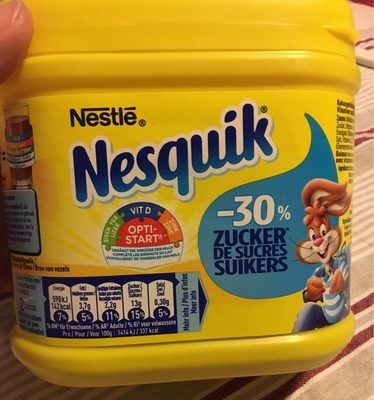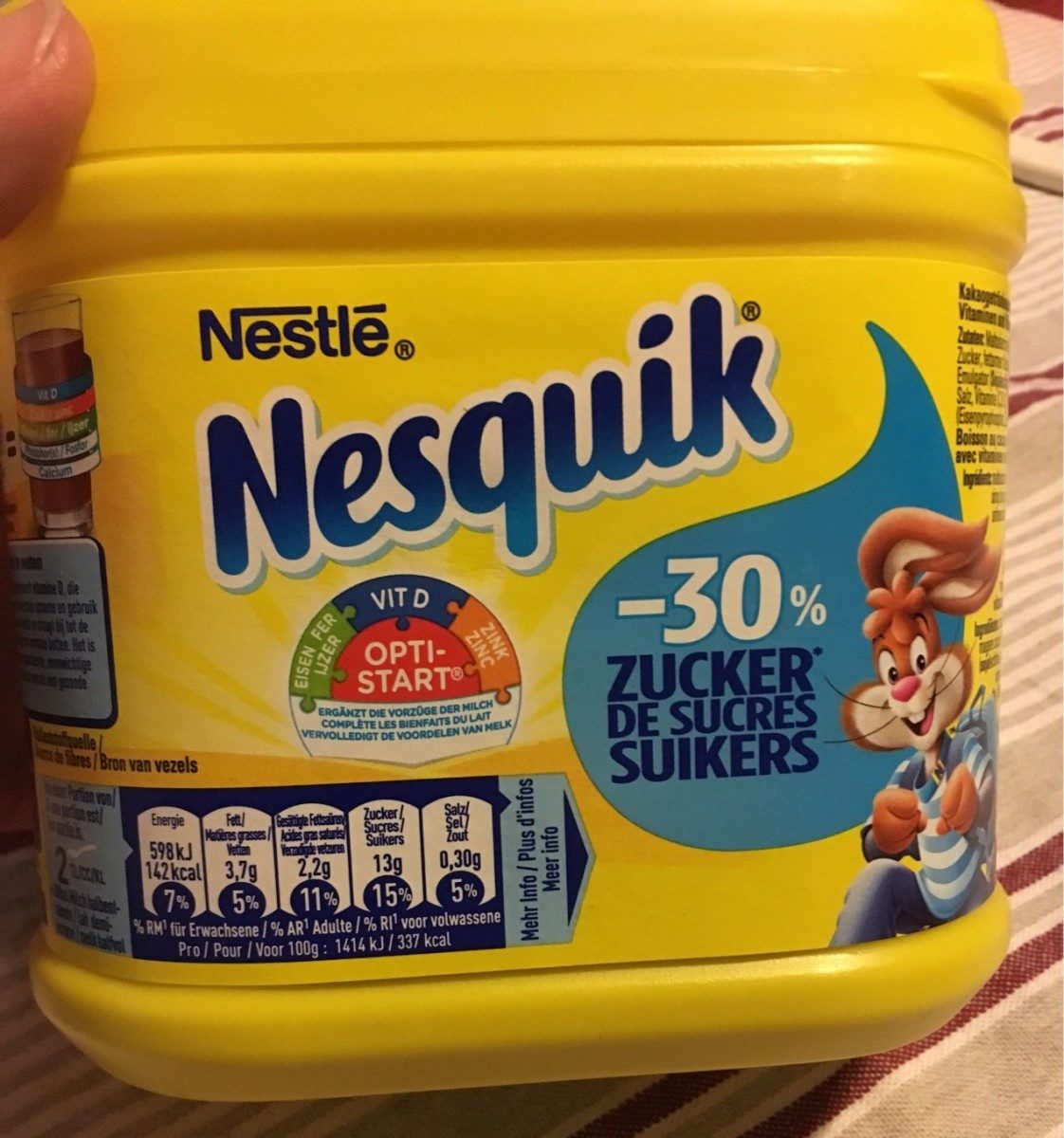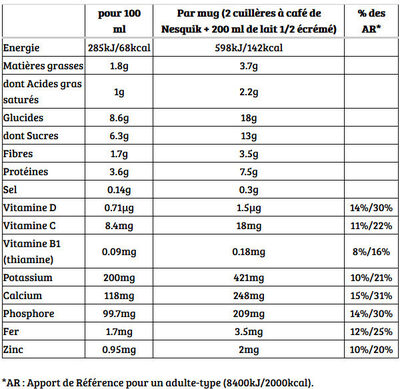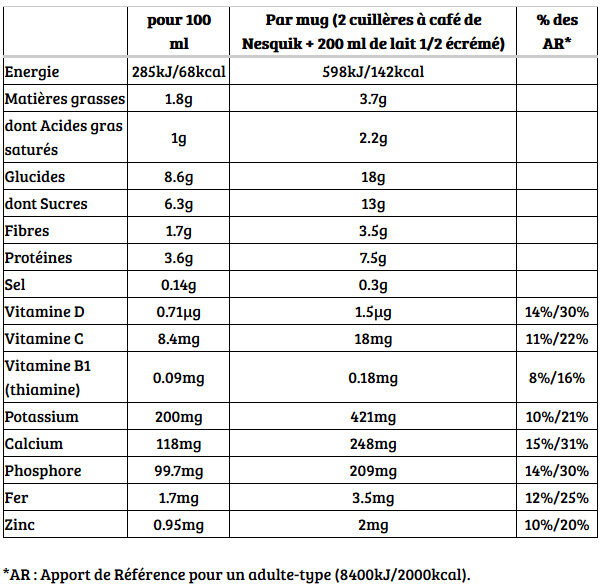Nestlé - Poudre de cacao allégée en sucre - nesquik - 350 g
La page de ce produit n'est pas complète. Vous pouvez aider à la compléter en l'éditant et en ajoutant plus de données à partir des photos que nous avons, ou en prenant plus de photos à l'aide de l'application pour Android ou iPhone / iPad. Merci!
×
Code-barres: 7613036619929 (EAN / EAN-13)
Dénomination générique : poudre de cacao allégée en sucre
Quantité : 350 g
Conditionnement : Boîte plastique
Marques : Nesquik
Catégories : Boissons, Petit-déjeuners, Cacao et dérivés, Cacaos et chocolats en poudre, Boissons instantanées, Cacaos en poudre, Chocolats en poudre
Labels, certifications, récompenses : Peu ou pas de sucre, Peu de sucre, Allégé en sucre, Moins 30% de sucre, Riche en vitamine D
Magasins : Delhaize
Correspondance avec vos préférences
Environnement
Empreinte carbone
Emballage
Transport
Signaler un problème
Sources de données
Produit ajouté le par kiliweb
Dernière modification de la page produit le par packbot.
Fiche produit également modifiée par chevalstar, countrybot, nini0606, openfoodfacts-contributors, quechoisir, scanbot, tacite-mass-editor, thomazo, yuka.SDRjdFN2a0RndHdhdnZabTV3MzUrWUpjLzcybVZuTHFPZFk0SVE9PQ, yuka.YjRjUklZZFkvUHN6aTgxdjRoZm40UFFxKzRPMVZuNkxjY0E3SVE9PQ.
Dernière vérification de la fiche produit le par chevalstar.








